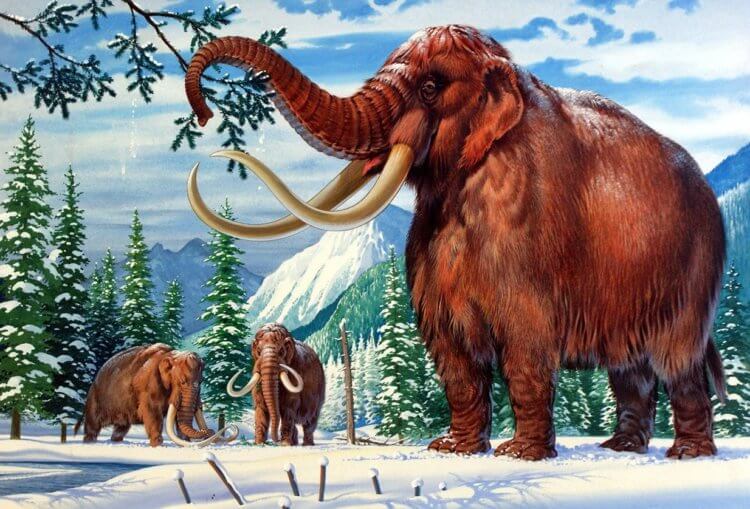News that scientists want to revive mammoths appears almost every year. One of the main companies doing this is Colossal Biosciences. The biotechnologists working there are trying to find out which mammoth genes were responsible for their resistance to cold, and also provided them with a large skull and curved tusks. Then these genes will be used to give birth to Asian elephants that are as similar as possible to the ancient giants. It seems that their work has finally begun to bear fruit – it was recently announced thathumanity will be able to see living mammoths as early as 2028By reviving mammoths, scientists want to not only demonstrate the greatness of science and entertain people, but also cover the cold places of our planet with grass. This could help save the lives of many animal species, as well as prevent the terrible consequences of global warming.

Biotechnologists will be able to show us living mammoths in a few years, but only if everything goes according to plan
Mammoth cloning company
Colossal Biosciences was founded just recently in 2021. Her main goal is to revive woolly mammoths with the help of Asian elephants. To return mammoths to Earth, representatives of this particular species of animal are needed – studies have shown that At the genetic level, Asian elephants and mammoths are 99% similar.

Asian elephants are very close relatives of mammoths
New scientific discovery:Elephants bury their relatives in almost the same way as people
How scientists will revive mammoths
It goes without saying that reviving mammoths is a very difficult task because it involves genetic engineering. But what scientists want to do can be explained step by step, in simple words.
To revive mammoths, scientists will do the following:
- they will find out what genes provided mammoths with thick hair, a thick layer of fat, long tusks and a large skull (previously, researchers had already created an embryo with the genetic data of ancient relatives of elephants);
- the found genes will be inserted into the DNA of Asian elephants, after which stem cells are formed that can transform into any tissue of the body;
- The resulting stem cells will be placed in the womb of a female or an artificial uterus to develop an embryo and give birth to a mammoth.

Using genetic engineering, scientists want to turn Asian elephants into such giants
This is the most simplified explanation of what Colossal Biosciences wants to do. At the moment, scientists don't know exactly how the new genes will affect Asian elephants. But there is hope that the embryos will grow into huge animals with long tusks and thick fur. They will not be the same mammoths that lived tens of thousands of years ago, but they will be similar to them both externally and genetically.
Read also:The main reason for the extinction of mammoths has been named – ancient people had nothing to do with it
How mammoths will save the Earth's climate
Scientists want to revive mammoths not only to demonstrate scientific progress. They want to do this to save the planet from global warming and animal extinction.
According to company representatives, if you release the revived mammoths into the vastness of Siberia, they will feel great there. It's cold there, but a thick layer of fat and thick wool will easily warm them up.

Mammoths, like elephants, are herbivores
In the cold regions of our planet, they will certainly live like their distant ancestors. In search of succulent branches, they will knock down trees, of which there are a lot in Siberia. This will create more space for grass to grow, which feeds many species of native animals. Their waste products will be an excellent fertilizer to accelerate its growth. Also, through their actions, mammoths will help the earth retain greenhouse gases, which are causing the average temperature of our planet to rise – scientists have long feared that the melting of permafrost in Siberia will release a huge amount of carbon dioxide.
Today this is all the most important thing you need to know about scientists’ plans to revive mammoths. We need to be patient and wait for news – as stated at the beginning of the article, it may appear as early as 2028. To avoid missing anything, subscribe to our Zen channel.
Also, don’t forget about our Telegram channel. We host interesting quizzes there!
In the meantime, you can read about new scientific discoveries regarding dinosaurs. My colleague Andrei Zhukov wrote especially a lot on this topic. For example, in May 2023, he talked about why mammoths periodically went berserk. And in November of the same year, we published an article about the discovery of mammoth bones in the Nizhny Novgorod region. If you are interested in paleontology, be sure to read!